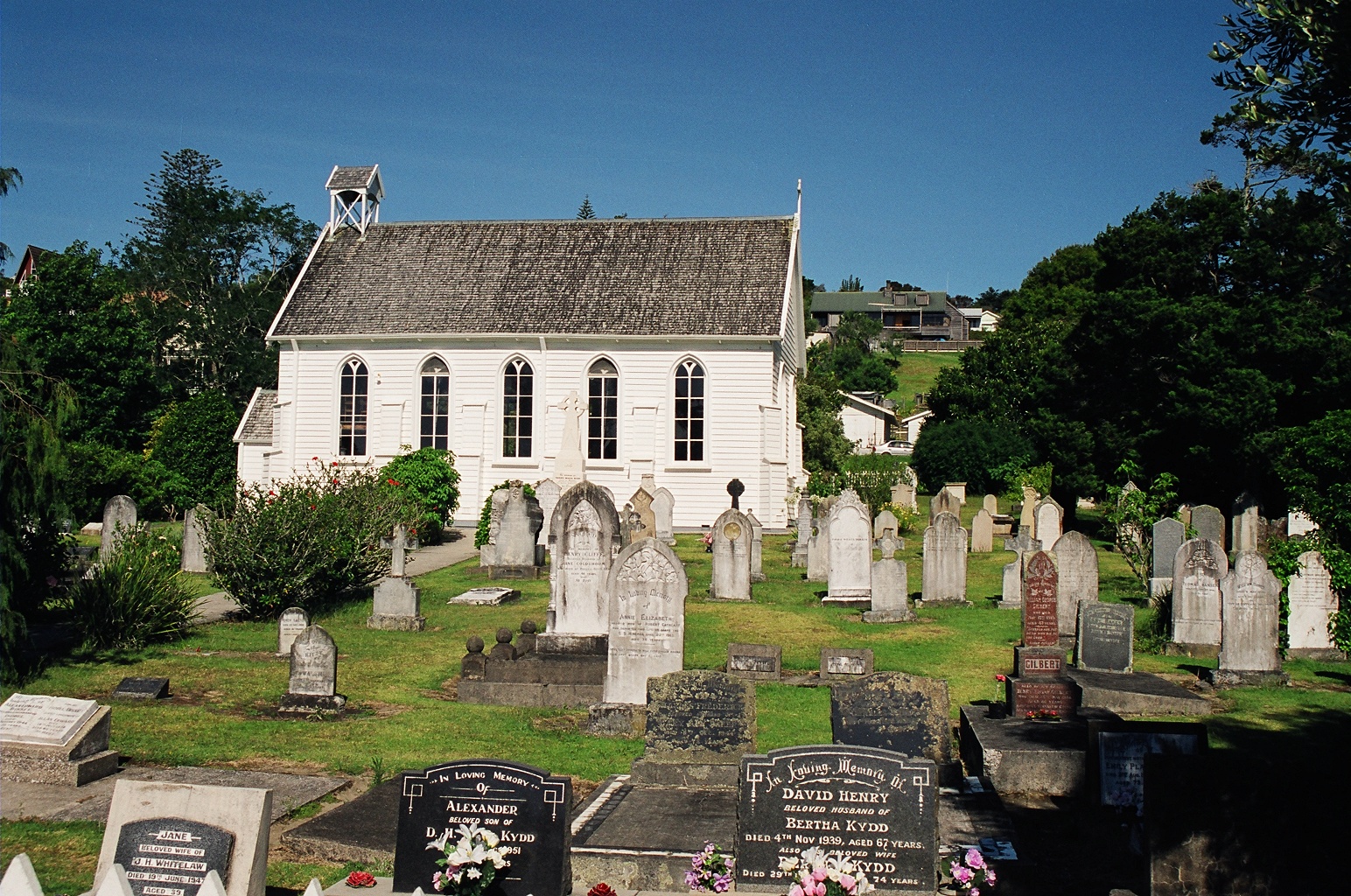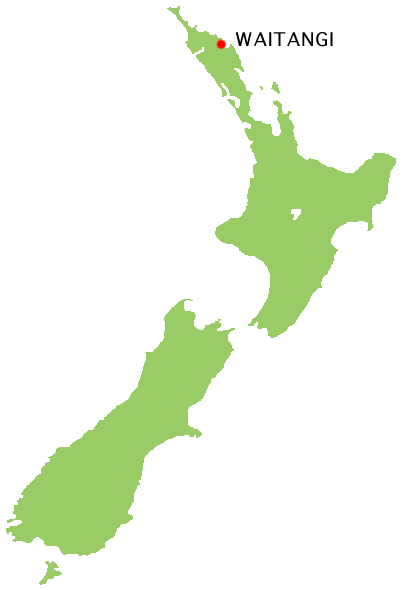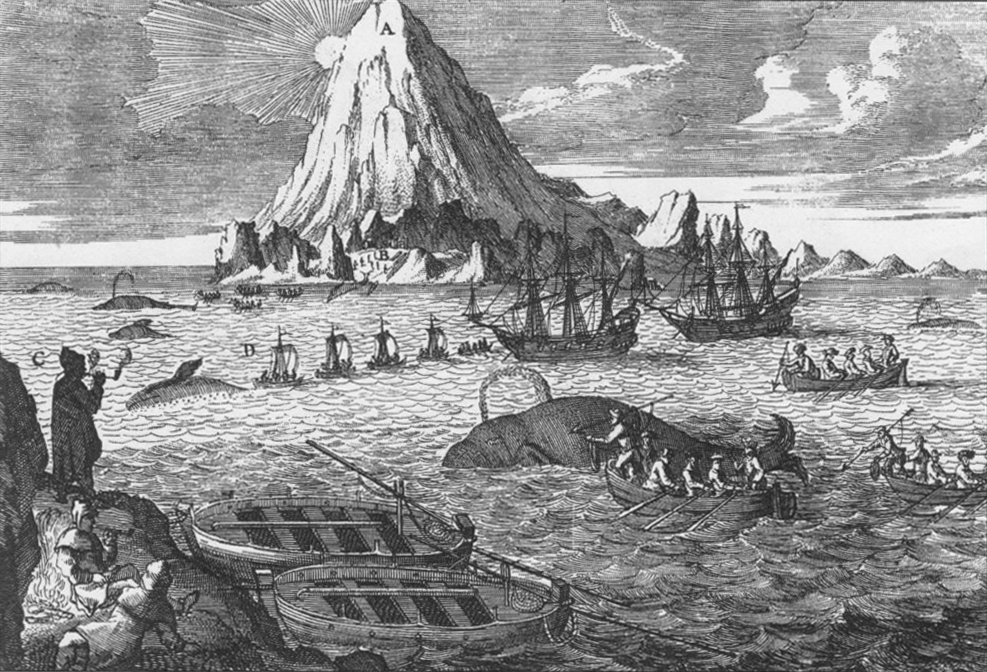|
Kororareka
Russell () is a town in the Bay of Islands, in New Zealand's far north. It was the first permanent European settlement and seaport in New Zealand. History Māori settlement Before the arrival of the Europeans, the area now known as Russell was inhabited by Māori people, Māori because of its pleasant climate and the abundance of food, fish and fertile soil. The settlement was known as Kororāreka, and was located on the coast. The name translates to 'sweet Little penguin, blue penguin', after an ailing chief who had eaten a penguin broth remarked or 'the kororā is sweet'.McCloy, Nicola (2006). ''Whykickamoocow – curious New Zealand place names''., Random House New Zealand. Early European explorers James Cook and Marc-Joseph Marion du Fresne remarked, by their arrival in the 18th century, that the area was quite prosperous. Early European settlement When European and American ships began visiting New Zealand in the early 1800s, the indigenous Māori quickly recog ... [...More Info...] [...Related Items...] OR: [Wikipedia] [Google] [Baidu] |
Capital Of New Zealand
Wellington has been the capital of New Zealand since 1865. New Zealand's first capital city was Old Russell (Okiato) in 1840–41. Auckland was the second capital from 1841 until 1865, when Parliament was permanently moved to Wellington after an argument that persisted for a decade. As the members of parliament could not agree on the location of a more central capital, Wellington was decided on by three Australian commissioners. Okiato Okiato or Old Russell is a small holiday spot in the Bay of Islands, south of present-day Russell, New Zealand, Russell, which was then known as Kororareka. Okiato was New Zealand's first national capital, for a short time from 1840 to 1841, before the seat of government was moved to Auckland. William Hobson arrived in New Zealand on 29 January 1840, the date now celebrated as the Auckland Anniversary Day. On the following day, as Governor-General of New Zealand, Lieutenant-Governor he proclaimed British Sovereignty in New Zealand. 30 January 1 ... [...More Info...] [...Related Items...] OR: [Wikipedia] [Google] [Baidu] |
Ngāpuhi
Ngāpuhi (also known as Ngāpuhi-Nui-Tonu or Ngā Puhi) is a Māori iwi associated with the Northland regions of New Zealand centred in the Hokianga, the Bay of Islands, and Whangārei. According to the 2023 New Zealand census, the estimated population of Ngāpuhi is 184,470. This compares to 125,601 in 2001, 102,981 in 2006, 122,214 in 2013. and 165,201 in 2018. It is formed from 150 hapū or subtribes, with 55 marae. Despite such diversity, the people of Ngāpuhi maintain their shared history and self-identity. Te Rūnanga ā Iwi o Ngāpuhi, based in Kaikohe, administers the iwi. The Rūnanga acts on behalf of the iwi in consultations with the New Zealand government. It also ensures the equitable distribution of benefits from the 1992 fisheries settlement with the government, and undertakes resource management and education initiatives. History Origins of Ngāpuhi Ngāpuhi, like most iwi, trace their pre-history back to the land of Hawaiki, most likely from Raiatea. ... [...More Info...] [...Related Items...] OR: [Wikipedia] [Google] [Baidu] |
Christ Church, Russell
Christ Church () is New Zealand's oldest surviving church (building), church, located in the village of Russell, New Zealand, Russell. The Anglicanism, Anglican church was built in 1835 by Gilbert Mair (trader), Gilbert Mair under the supervision of Charles Baker (missionary), Charles Baker (later Reverend), and originally held services in both English and Māori language, Māori. It was also occasionally used as the local courthouse. The church was registered by Heritage New Zealand on 24 November 1983 as registration number 1, with a category I listing. 19th century In the early 19th century, Russell, then known as Kororareka, was used as a safe harbour by Whaling, whalers. The land for the church was purchased in 1834 from local chiefs on the condition that Māori people, Māori and Pākehā (non-Māori) would have the same right to burial. The cost of its construction was contributed to by Charles Darwin. Although Darwin, on his 1835 visit, described the town as a "str ... [...More Info...] [...Related Items...] OR: [Wikipedia] [Google] [Baidu] |
Moka Te Kainga-mataa
Moka Kainga-mataa e Kaingamataa/Te Kaingamata/Te Kainga-mata/Te Kainga-mataa'' (1790s–1860s) was a Māori rangatira (chief) of the Ngā Puhi iwi from Northland in New Zealand. He was distinguished in war and an intelligent participant in the Treaty of Waitangi process. Origin and mana Moka Kainga-mataa was a Ngāpuhi chief of Ngai Tawake descent, who along with his brothers Te Wharerahi and Rewa, formed the Patukeha hapū in memory of their slain mother Te Auparo and sister Te Karehu. Their mother and sister had been murdered and their bodies consumed in an attack by the Ngare Raumati Iwi on Okuratope Pa, (Waimate North) in 1800. Seven years later, in 1807, Moka's father was killed and also consumed, in the battle of Moremonui, when the Ngāpuhi went up against the Ngāti Whātua, in what is recognised as the first battle in which Māori utilised firearms. Musket Wars Moka and his two brothers Te Wharerahi and Rewa participated in the bloody Musket Wars of the 1820s-1830s ... [...More Info...] [...Related Items...] OR: [Wikipedia] [Google] [Baidu] |
Treaty Of Waitangi
The Treaty of Waitangi (), sometimes referred to as ''Te Tiriti'', is a document of central importance to the history of New Zealand, Constitution of New Zealand, its constitution, and its national mythos. It has played a major role in the treatment of the Māori people in New Zealand by successive governments and the wider population, something that has been especially prominent from the late 20th century. The treaty document is an agreement, not a treaty as recognised in international law. It was first signed on 6 February 1840 by Captain William Hobson as Administrative consul, consul for the British Crown and by Māori chiefs () from the North Island of New Zealand. The treaty's quasi-legal status satisfies the demands of biculturalism in contemporary New Zealand society. In general terms, it is interpreted today as having established a partnership between equals in a way the Crown likely did not intend it to in 1840. Specifically, the treaty is seen, first, as entitling M ... [...More Info...] [...Related Items...] OR: [Wikipedia] [Google] [Baidu] |
Northland Region
Northland (), officially the Northland Region, is the northernmost of New Zealand's 16 regions of New Zealand, local government regions. New Zealanders sometimes refer to it as the Winterless North because of its mild climate all throughout the year. The major population centre is the city of Whangārei, and the largest town is Kerikeri. At the 2018 New Zealand census, Northland recorded a population growth spurt of 18.1% since the previous 2013 New Zealand census, 2013 census, placing it as the fastest growing region in New Zealand, ahead of other strong growth regions such as the Bay of Plenty Region (2nd with 15%) and Waikato (3rd with 13.5%). Geography The Northland Region occupies the northern 80% () of the Northland Peninsula, the southernmost part of which is in the Auckland region. It is bounded to the west by the Tasman Sea, and to the east by the Pacific Ocean. The land is predominantly rolling hill country. Farming and forestry occupy over half of the land and are ... [...More Info...] [...Related Items...] OR: [Wikipedia] [Google] [Baidu] |
Northland Regional Council
Northland (), officially the Northland Region, is the northernmost of New Zealand's 16 local government regions. New Zealanders sometimes refer to it as the Winterless North because of its mild climate all throughout the year. The major population centre is the city of Whangārei, and the largest town is Kerikeri. At the 2018 New Zealand census, Northland recorded a population growth spurt of 18.1% since the previous 2013 census, placing it as the fastest growing region in New Zealand, ahead of other strong growth regions such as the Bay of Plenty Region (2nd with 15%) and Waikato (3rd with 13.5%). Geography The Northland Region occupies the northern 80% () of the Northland Peninsula, the southernmost part of which is in the Auckland region. It is bounded to the west by the Tasman Sea, and to the east by the Pacific Ocean. The land is predominantly rolling hill country. Farming and forestry occupy over half of the land and are two of the region's main industries. Alth ... [...More Info...] [...Related Items...] OR: [Wikipedia] [Google] [Baidu] |
Jasons Travel Media
Jasons is a publisher of travel guides and an online directory of activities and lodging in New Zealand, Australia, and the South Pacific. Jasons produces 62 free travel guides annually. History The company was started as a family business in 1967 by John Sanford. In 1996, the company launched a website. Jason Publishing Co Ltd was renamed to Jasons Travel Media in 2000. In 2005, it became a public company via an initial public offering on the New Zealand Stock Exchange. In August 2006, Steven Joyce, later Minister of Economic Development, Minister of Science and Innovation, Minister for Tertiary Education, Skills and Employment and Associate Minister of Finance in New Zealand, became chief executive officer of the company after he acquired an 8.8% stake. In 2008, the company acquired Strait Solutions; the Today-Tonight visitor guide print publications in Christchurch and Queenstown; and the brochure distribution services and two visitor guides of Whytewaters in Queenstown. I ... [...More Info...] [...Related Items...] OR: [Wikipedia] [Google] [Baidu] |
Okiato
Okiato or Old Russell is a small town in the Bay of Islands, New Zealand, south of present-day Russell. It was founded in 1840 and served as New Zealand's first national capital until 1841, when the seat of government was moved to Auckland. The car ferry across the Bay of Islands, which provides the main access to Russell, runs between Okiato and Opua. History Pōmare II, the chief of the local Ngāti Manu Māori tribe (iwi) in the 1830s, sold land at Okiato to British merchant and ship owner Captain James Reddy Clendon, who settled there in 1832 and set up a trading station with partner Samuel Stephenson. Clendon became the first United States Consul for New Zealand in 1838 or 1839. When the Treaty of Waitangi was signed in February 1840, Lieutenant-Governor William Hobson instructed the Surveyor-General, Felton Mathew, to report on possible locations for a capital in the Bay of Islands. Clendon's property met the requirements for a good anchorage and immediate availabil ... [...More Info...] [...Related Items...] OR: [Wikipedia] [Google] [Baidu] |
Colony Of New Zealand
The Colony of New Zealand was a colony of the United Kingdom of Great Britain and Ireland, United Kingdom from 1841 to 1907. British authority was vested in a List of governors-general of New Zealand, governor. The colony had Capital of New Zealand, three successive capitals: Okiato (or Old Russell) in 1841; Auckland from 1841 to 1865; and Wellington from 1865. Following the New Zealand Constitution Act 1852, the colony became a Crown colony with its first elected parliament in 1853. Responsible self-government was established in 1856 with the governor being required to act on the advice of his Ministers in the New Zealand Government, ministers. In 1907, the colony became the Dominion of New Zealand within the British Empire. History Establishment Following the extension of the boundaries of New South Wales in January 1840 by Governor Gipps to include New Zealand, William Hobson left Sydney for New Zealand. The Treaty of Waitangi—between Māori chiefs and British repre ... [...More Info...] [...Related Items...] OR: [Wikipedia] [Google] [Baidu] |
Seal Hunting
Seal hunting, or sealing, is the personal or commercial hunting of Pinniped, seals. Seal hunting is currently practiced in nine countries: Canada, Denmark (in self-governing Greenland only), Russia, the United States (above the Arctic Circle in Alaska), Namibia, Estonia, Norway, Finland and Sweden. Most of the world's seal hunting takes place in Canada and Greenland. The Canadian Fisheries and Oceans Canada, Department of Fisheries and Oceans (DFO) regulates the seal hunt in Canada. It sets quotas (total allowable catch – TAC), monitors the hunt, studies the seal population, works with the Canadian Sealers' Association to train sealers on new regulations, and promotes sealing through its website and spokespeople. The DFO set harvest quotas of over 90,000 seals in 2007; 275,000 in 2008; 280,000 in 2009; and 330,000 in 2010. The actual kills in recent years have been less than the quotas: 82,800 in 2007; 217,800 in 2008; 72,400 in 2009; and 67,000 in 2010. In 2007, Norway repo ... [...More Info...] [...Related Items...] OR: [Wikipedia] [Google] [Baidu] |
Whaling
Whaling is the hunting of whales for their products such as meat and blubber, which can be turned into a type of oil that was important in the Industrial Revolution. Whaling was practiced as an organized industry as early as 875 AD. By the 16th century, it had become the principal industry in the Basque coastal regions of Spain and France. The whaling industry spread throughout the world and became very profitable in terms of trade and resources. Some regions of the world's oceans, along the animals' migration routes, had a particularly dense whale population and became targets for large concentrations of whaling ships, and the industry continued to grow well into the 20th century. The depletion of some whale species to near extinction led to the banning of whaling in many countries by 1969 and to an international cessation of whaling as an industry in the late 1980s. Archaeological evidence suggests the earliest known forms of whaling date to at least 3000 BC, practiced by the ... [...More Info...] [...Related Items...] OR: [Wikipedia] [Google] [Baidu] |







